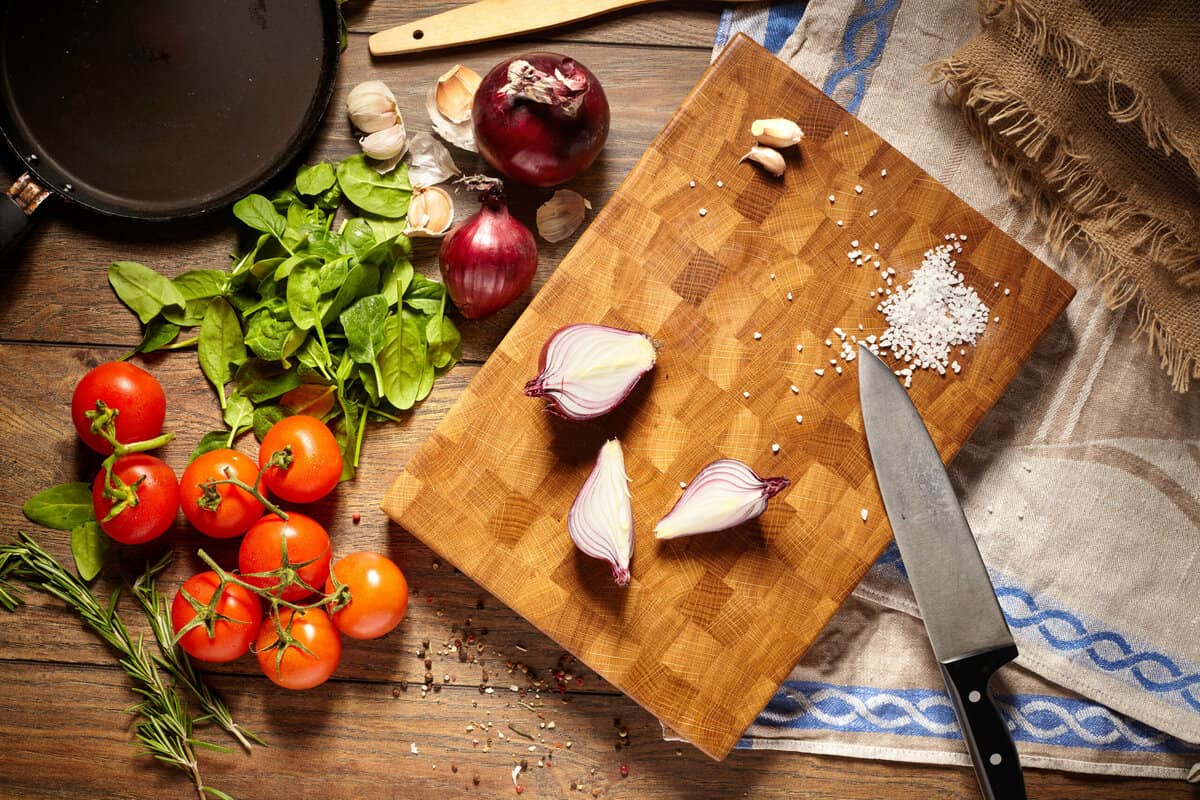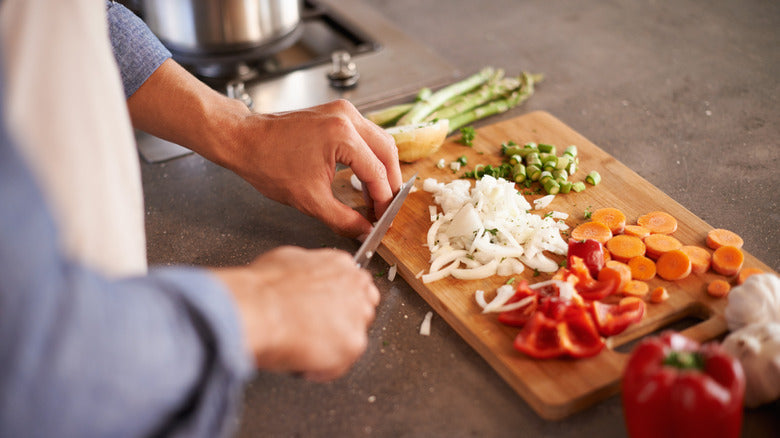For kitchen professionals, one question often strikes as a recurring dilemma: where to store cutting boards? A well-organized kitchen is essential when juggling tasks efficiently, and the placement of your cutting boards can dramatically enhance or hinder your workflow. Whether in a bustling restaurant kitchen or your cozy home workspace, the strategic storage of cutting boards impacts safety, cleanliness, and productivity. Lets dive into everything you need to know about finding the ideal space for your cutting board.
Why does it matter so much, you ask? The answer lies in its significant role in maintaining hygiene, extending the lifespan of your cutting boards, and optimizing kitchen functionality. Get ready to learn life-changing hacks to solve this challenge!

Understanding the Importance of Proper Cutting Board Storage
The kitchen is a dynamic workspace, and every tool must have its dedicated place. Improper storage can lead to warped boards, cross-contamination, or, worse, a cluttered kitchen. For professionals, allocating a safe and efficient spot is vital.
Proper storage ensures that your cutting boards remain dry and cleantwo crucial aspects to prevent bacteria buildup. It also maintains the integrity of materials like wood, bamboo, or plastic, prolonging their usability and performance in culinary feats.
1. Countertop Racks: A Delightful Solution
One practical yet stylish storage option is countertop racks. These racks are designed to hold multiple boards upright, allowing proper ventilation. This minimizes moisture retention, which is a common enemy of wooden cutting tools.
Racks are particularly excellent for high-paced kitchens. They ensure that cutting boards are always within reach and can be easily segregated based on their specific use caseslike raw meat, vegetables, or ready-to-eat foods. Learn how to use cutting boards correctly.
2. Wall-Mounted Holders: Tremendous Space-Saving Technology
If youre dealing with limited counter space, wall-mounted holders are an unmissable option. These innovative tools utilize vertical areas, ensuring your kitchen remains organized and spacious. You can attach these holders near your prep station for ultimate convenience.
Moreover, they promote air circulation, minimizing any chances of mold or odor buildup. If youre exploring this storage method, make sure to choose rust-resistant materials for durability.
3. Drawer Dividers and Pull-Outs for an Organized Aesthetic
Drawers equipped with custom dividers or pull-out trays are immensely popular among high-end kitchens. They combine functionality with aesthetics by keeping the boards out of sight but readily accessible.
For those using wooden cutting boards, placing them horizontally rather than vertically within the drawer helps prevent warping. Be sure to dry each board thoroughly before storing them in enclosed drawers. You can refer to why having a specific cutting board matters for tailored advice.
4. Vertical Storage in Cabinet Doors
Mounting racks or hooks inside cabinet doors is another space-saving idea. This option accommodates vertical storage, keeping boards clean and off your prepping areas.
However, always ensure your boards are properly cleaned and dried. This prevents microbial growth, especially in areas with less ventilation. To delve deeper into cutting board maintenance, check out tips on sanitizing cutting boards effectively.
What Cutting Board Materials Demand Special Storage?
Understanding cutting board materials can also guide your decision on storage solutions. Each materialwhether wood, bamboo, plastic, or glasshas specific care requirements:
- Wooden Boards: Should be stored in a dry, ventilated area to avoid warping and mold.
- Bamboo Boards: Need similar care as wooden boardskeep them upright and dry.
- Plastic Boards: Are humidity-resistant but should still air dry to avoid bacteria accumulation.
- Glass Boards: Require minimal maintenance, but proper placement ensures they dont chip or break.
To learn about unique challenges like shedding in bamboo boards, read why bamboo boards shed.
Life-Changing Tips for Hygienic Storage
Here are some life-changing, pro-approved storage tips that go beyond the basics:
- Use Dehumidifiers: Keep your workspace moisture-free for wooden and bamboo boards.
- Rotate Boards: Prevent uneven wear by regularly changing the placement or usage cycle of your boards.
- Label Boards: For commercial kitchens, label boards for specific food types to boost hygiene.
For additional resources on food safety, visit Cutting Board Safety Tips.

FAQs
1. How do you avoid moisture issues in cutting board storage?
Always dry your cutting boards completely before storing them. Choose storage options that promote ventilation, such as racks or wall-mounted holders.
2. Should wooden and plastic boards be stored differently?
Yes, wooden boards require more ventilation and should never be stored while wet. Plastic boards are less sensitive to humidity but still need proper airflow for hygiene.
3. Where can I learn more about cutting board organization?
Read more comprehensive guides on cutting boards at Cutting Boards 101.
In conclusion, choosing where to store cutting boards is not just a matter of preference but critical kitchen management. Adopt these remarkable storage ideas and enjoy an optimized, well-organized cooking space!
This article contains affiliate links. We may earn a commission at no extra cost to you.






Leave a comment
This site is protected by hCaptcha and the hCaptcha Privacy Policy and Terms of Service apply.